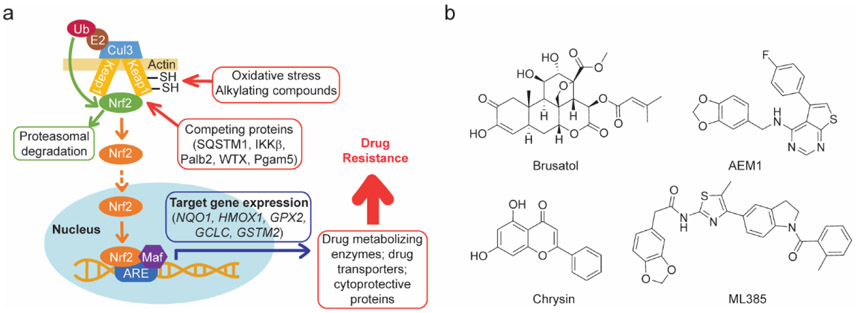Figure 1.
(a) The dominant control mechanism by which Nrf2 activity is regulated occurs through its association with the E3 ubiquitin ligase KEAP1 and subsequent ubiquitination and proteasomal degradation. Reactive oxygen species and alkylating compounds react with key thiol resides on KEAP1 and promote dissociation of Nrf2 from the KEAP1 complex. Dissociation of Nrf2 from this complex can also be achieved by the expression of mutated form of KEAP1 as is common in numerous different cancer types and through the increased expression or availability of proteins that compete with Nrf2 for KEAP1 binding. Nrf2 translocates to the nucleus where it positively regulates the expression of genes required for resistance to oxidative stress, including drug metabolizing enzymes and transporters capable of detoxifying and effluxing anti-neoplastic agents, the combination of which gives rise to drug resistance. (b) Representative Nrf2 inhibitors previously reported.

